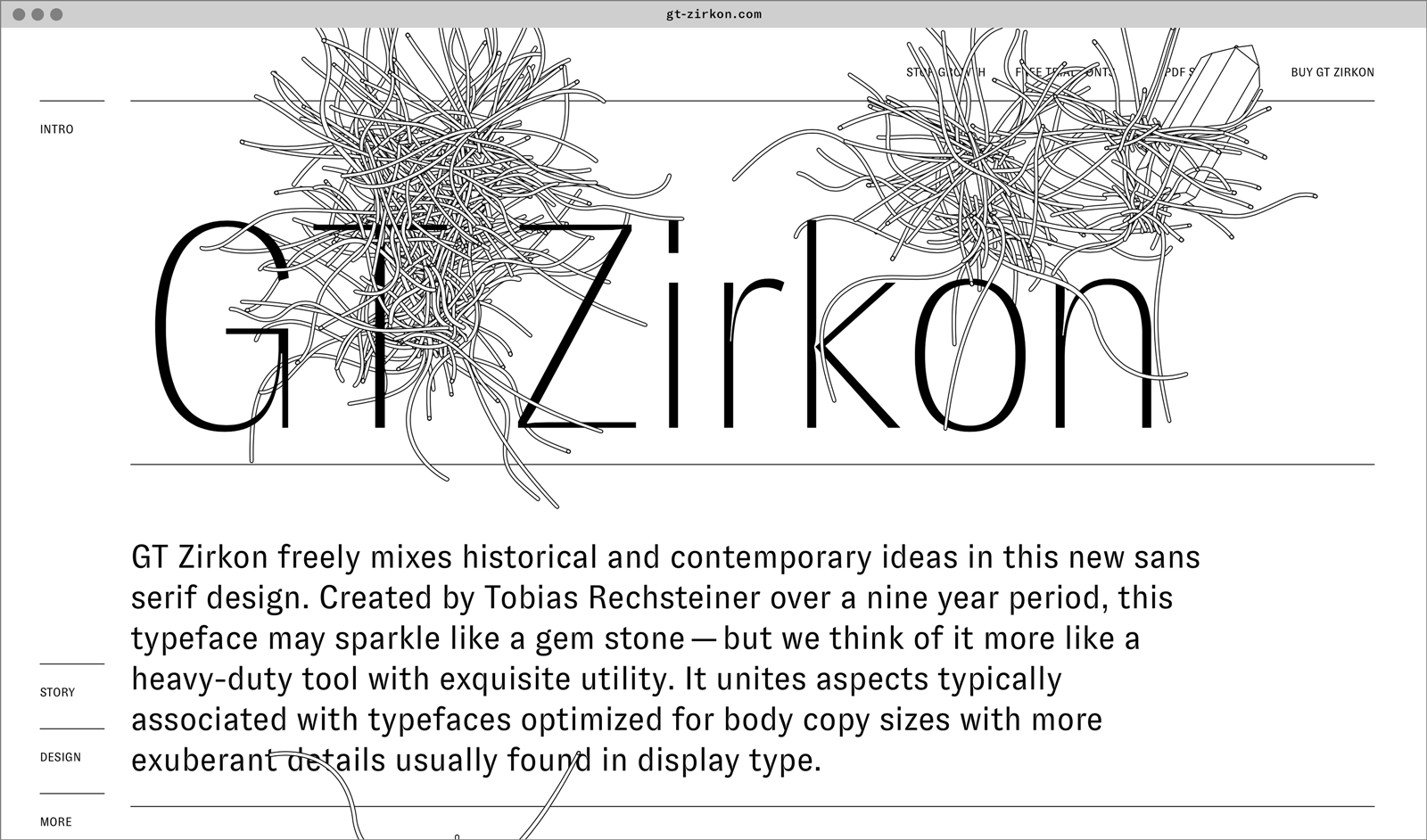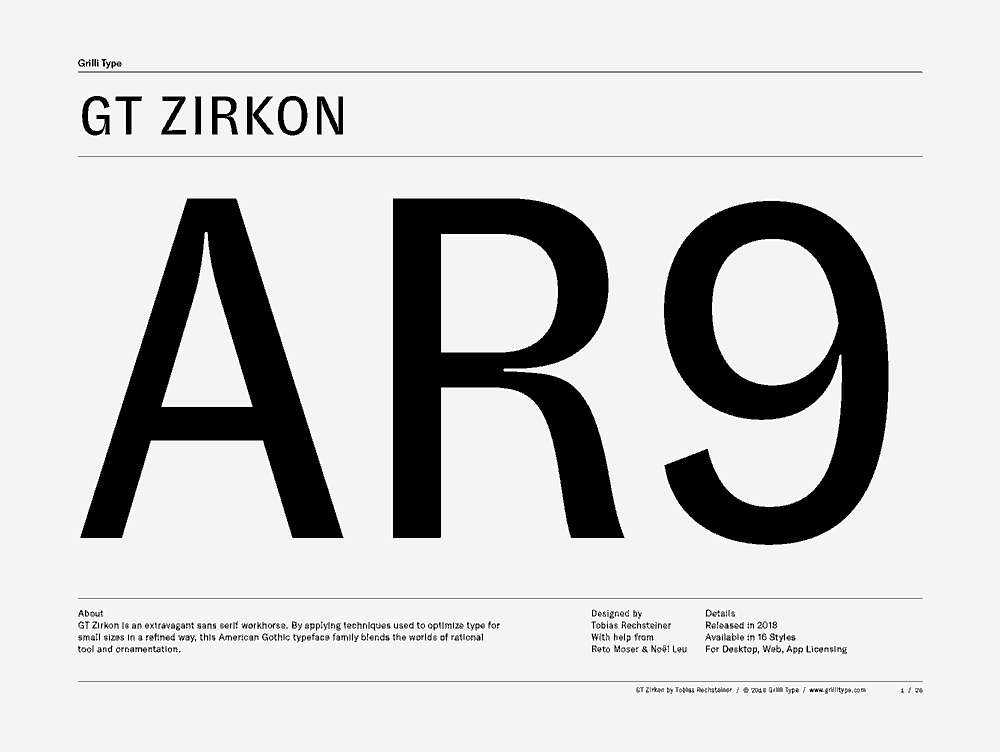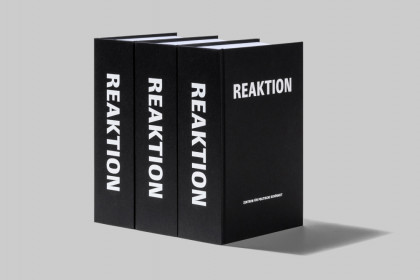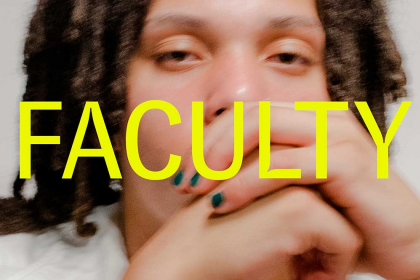GT Zirkon
Family overview
- Ultra Light Italic
- Thin Italic
- Light Italic
- Book Italic
- Regular Italic
- Medium Italic
- Bold Italic
- Black Italic
- Ultra LightRadioactive dating shows that the zircon crystals were formed more than 4 billion years ago.
- Ultra Light ItalicSome rocks, such as limestone or quartzite, are composed primarily of one mineral—calcite or aragonite in the case of limestone, and quartz in the latter case.
- ThinMinerals are distinguished by various chemical and physical properties. Differences in chemical composition and crystal structure distinguish the various species, which were determined by the mineral’s geological environment when formed.
- Thin ItalicMinerals are distinguished by various chemical and physical properties. Differences in chemical composition and crystal structure distinguish the various species, which were determined by the mineral’s geological environment when formed.
- LightOn the Isle of Skye near Ireland, is a chapel dedicated to St. Columbus, and on the altar is a round crystalline blue stone held sacred to weather and health.
- Light ItalicZircon often contains traces of radioactive elements in its structure, which causes it to be metamict.
- BookMinerals are distinguished by various chemical and physical properties. Differences in chemical composition and crystal structure distinguish the various species, which were determined by the mineral’s geological environment when formed.
- Book ItalicThe name zircon is taken from the name of the mineral zircon, the most important source of zirconium.
- RegularNew York University chemists have created three-dimensional DNA structures, a breakthrough bridging the molecular world to the world where we live.
- Regular ItalicSome rocks, such as limestone or quartzite, are composed primarily of one mineral—calcite or aragonite in the case of limestone, and quartz in the latter case.
- MediumAustralia leads the world in zircon mining, producing 37% of the world total and accounting for 40% of world EDR for the mineral.
- Medium ItalicZircons from Jack Hills in the Narryer Gneiss Terrane, Yilgarn Craton, Western Australia, have yielded U-Pb ages up to 4.404 billion years
- BoldManly P. Hall and other students of esoteric wisdom have also noted that many ancient crystals were produced by ‘zodiacal formulae’ grown at specific times, when the sun, moon and planets were in special heavenly positions.
- Bold ItalicZircon is mainly consumed as an opacifier, and has been known to be used in the decorative ceramics industry.
- BlackCursed gems are the exception to the rule, however, for in most respects, gems and crystals are generally looked upon favorably, having properties for good luck, for healing, and in aiding in psychic abilities.
- Black ItalicCurrently, zircons are typically dated by uranium-lead (U-Pb), fission-track, cathodoluminescence, and U+Th/He techniques.
- Settings
Typeface information
GT Zirkon is an extravagant sans serif workhorse. It blends the worlds of rational tool and ornamentation by applying techniques used to optimize type for small sizes in a refined way.
Typeface features
OpenType features enable smart typography. You can use these features in most Desktop applications, on the web, and in your mobile apps. Each typeface contains different features. Below are the most important features included in GT Zirkon’s fonts:
- SS01
- Alternate Arrows
Volume ↗
- SS02
- Alternate f
Refraction
- ONUM
- Oldstyle Figures
0123456789
- SMCP
- Small Caps
Ore Deposit
Typeface Minisite


- Visit the GT Zirkon minisite to discover more about the typeface family’s history and design concept.
GT Zirkon in use





